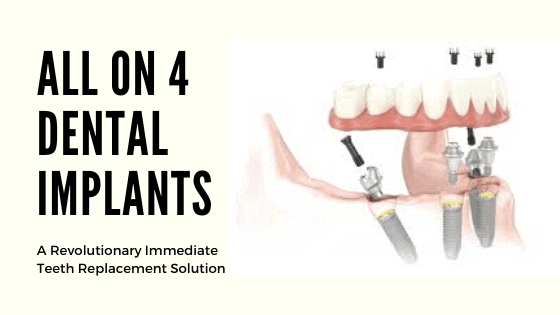Health
Analyzing the Complete All-on-4 Dental Implant Process

All-on-4 is a ground-breaking method for replacing several lost teeth and reconstructing a patient’s mouth to regain full function. We describe All-on-4 dental implants in detail in this manual, along with what the patient can anticipate.
The terrible event of losing teeth can occur for a variety of reasons. It can occur as a result of various oral health issues, an unintentional blow to the mouth, or tooth decay that has progressed to an advanced degree. Lost teeth are a problem that needs to be properly addressed in order to restore the patient’s mouth to full functionality, regardless of the underlying cause. The All-on-4 approach is among the most innovative and cutting-edge ways to accomplish this objective.
The All-on-4 Technique
The dental surgeon will measure and mark the patient’s top and bottom jaws at the time of the surgical component of the treatment to make sure that this distance is retained once the surgery is complete.
The procedure will start after the patient is asleep. Excess or diseased gum tissue will be removed, along with any remaining teeth and any signs of previously lost teeth. An incision will be made along the length of the ridge on both the top and bottom jaws to expose the jawbone for ridge reduction. The predefined amounts of bone from the top and bottom arches will be removed to lessen the ridge, and the remaining bone will be flattened and ready for the placement of the dental implants.
Each insertion spot for the dental implants will be marked on the bone’s surface before being implanted. To achieve the maximum strength and stability while avoiding contact with any other facial structure, such as nerves or sinus cavities, pilot holes for the implants will be drilled at exact angles. The dental surgeon will restore the gum tissue around the implants and stitch up any openings once the implants have been placed and tightened to the ideal torque requirements.
The replacement tooth prosthesis mounting posts, or abutments, will now be fastened to the ends of the implants. The contact locations where the temporary prosthesis meets the abutments will be marked, drilled, and inspected to guarantee a tight fit. The temporary prosthesis will now be ready to be placed, and mechanical fasteners will be used to hold it there.
In addition to checking and confirming the bite pattern, the holes in the temporary prosthesis will be filled and sealed. Any high spots or strange contact points will now be fixed to guarantee the perfect occlusion of the top and bottom jaws. Now the healing process can start.
Examination and Consultation
A thorough evaluation and conversation with the patient are conducted to lay the groundwork for a full-mouth restoration. In addition to x-rays, digital 3D scans, and a comprehensive physical examination of the mouth, this will involve a full evaluation of the patient’s dental health and past medical history.
The goal of these examinations and testing is to provide the dentist with a thorough overview of the patient’s oral health and to spot any underlying problems that may need to be taken care of or fixed before the All-on-4 operation can begin.
Choose the right doctor for your implant so that the process is conducted smoothly without any trouble.
-
Blog1 year ago
MyCSULB: Login to CSULB Student and Employee Portal – MyCSULB 2023
-
Android App3 years ago
Cqatest App What is It
-
Android1 year ago
What Is content://com.android.browser.home/ All About in 2023? Set Up content com android browser home
-
Software2 years ago
A Guide For Better Cybersecurity & Data Protection For Your Devices
-
Latest News2 years ago
Soap2day Similar Sites And Alternatives To Watch Free Movies
-
Android2 years ago
What is OMACP And How To Remove It? Easy Guide OMACP 2022
-
Android3 years ago
What is org.codeaurora.snapcam?
-
Business2 years ago
Know Your Business (KYB) Process – Critical Component For Partnerships





















